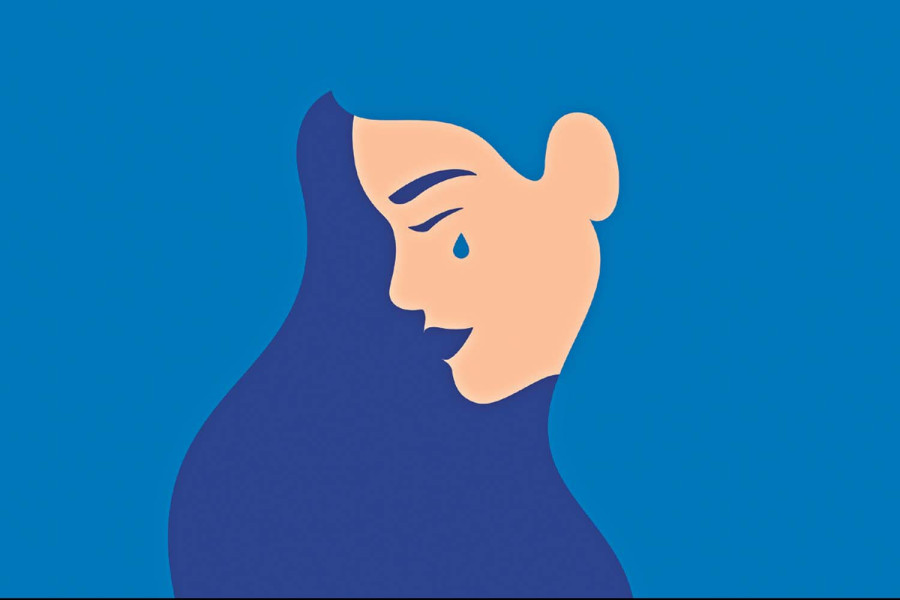Health
Mental health: More Nepali women are afflicted than men
Twenty-two percent women and 11 percent men aged 15 to 49 years have symptoms of anxiety in Nepal.
Arjun Poudel
Twice as many Nepali women suffer from mental health problems as do Nepali men, according to the Nepal Demographic and Health Survey-2022.
According to the final report of the nationwide study carried out by the Ministry of Health and Population between January 5 and June 22 last year with technical and financial support from the United States Agency for International Development, 22 percent of the women and 11 percent of men aged 15 to 49 years were found to be suffering from anxiety.
Anxiety disorder is a type of mental health condition in which patients feel nervous, and have intense, excessive and persistent worry about everyday situations.
The report shows that five percent of women and two percent of men of the same age group suffer from depression, a common and serious form of mental health problem that involves low mood and loss of interest in activities.
The most common symptoms of anxiety that women and men reported having experienced ‘often’ or ‘always’ were becoming easily annoyed or irritable (14 percent and 7 percent, respectively), the report stated. This was followed by feeling nervous, anxious, or on the edge (13 percent and six percent, respectively); and worrying too much about things (12 percent and seven percent, respectively]).
According to the study, women aged between 40 and 44 years were most likely to have symptoms of anxiety, while women aged between 15 and 19 years were least likely to have symptoms (27 percent versus 18 percent). There is no consistent pattern in symptoms of anxiety by age among men.
The study showed that 28 percent of women and 18 percent of men in Karnali Province are more likely to experience anxiety, more than in any other province. In Gandaki province, 18 percent of women and seven percent of men experience symptoms of anxiety.
The proportion of women experiencing symptoms of anxiety is higher among those with no education than those with more than a secondary education (26 percent versus 13 percent). In contrast, men with no education less often show symptoms of anxiety than those with more than secondary education (eight percent versus 13 percent).
The most common symptoms of depression that women and men reported having experienced “often” or “always” were feeling tired or having little energy (nine percent and two percent, respectively); feeling down, depressed, or hopeless (eight percent and three percent, respectively); trouble falling asleep or staying asleep or sleeping too much (seven percent and four percent, respectively); and little interest or pleasure in doing things (seven percent and three percent, respectively).
Women aged between 40 and 44 years (eight percent) more often reported experiencing symptoms of depression than those in other age groups. Among men, those aged between 20 and 24 years most often reported experiencing symptoms of depression (three percent).
Women and men in the highest wealth quintile are generally less likely than those in the other quintiles to report symptoms of depression. One percent of men in the highest wealth quintile report symptoms of depression, as compared with three percent in the lowest quintile. Among women, three percent of those in the highest wealth quintile report symptoms of depression, compared with six percent in the lowest three quintiles.
Mental health experts in Nepal say even globally, compared to men, more women suffer from depression and anxiety.
“As causes of the problems—anxiety and depression—differ from person to person, different approaches are needed,” said Dr Ananta Adhikari, director of Nepal Mental Hospital. “The authorities should start programmes to address problems thousands of people have been suffering from.”




 8.12°C Kathmandu
8.12°C Kathmandu














